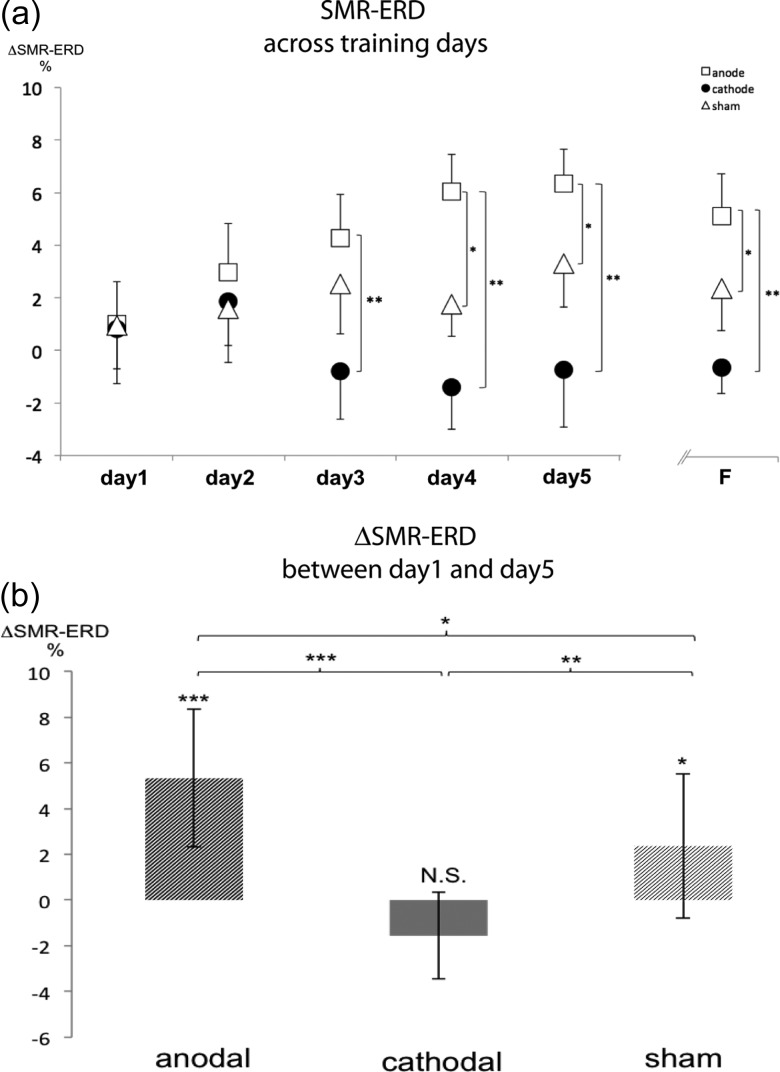Figure 4.
Group control of SMR oscillations across training days (a). Note the different time-course of learning to control SMR-ERD in the 3 groups (a). Learning across training days was more prominent in the anodal tDCS compared with the sham (P < 0.05 on Day 4, Day 5 and F) and cathodal tDCS compared with the sham group (P < 0.01 on Day 3, Day 4, Day 5 and F). (b) SMR-ERD improved significantly with training from Day 1 to Day 5 in the sham group (P < 0.05). Anodal tDCS improved SMR-ERD beyond levels seen in the sham tDCS group (P < 0.001) resulting in significantly better learning in the anodal group compared with sham (P < 0.05). Cathodal tDCS blocked the training-induced improvements in the sham group (P < 0.05). Variance is shown as SEM. *P < 0.05; **P < 0.01; ***P < 0.001.

